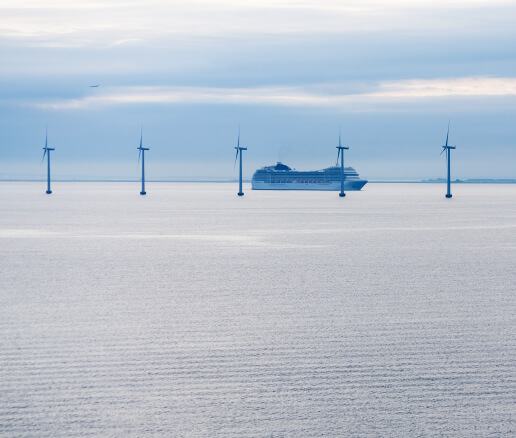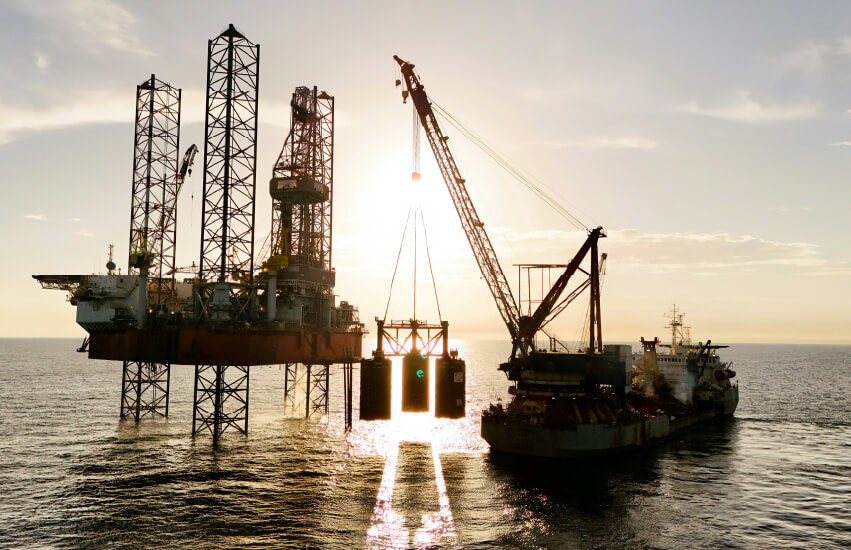by Webbing Team | August 20, 2025
There are many locations where providing connectivity is challenging. Some lack necessary infrastructure, such as remote or rural areas, while others pose difficulties due to harsh conditions, like mines. Another layer of complexity arises in locations with constantly moving assets, such as large international airports, with fleets of vehicles or even autonomous robots. But offshore locations combine all these challenges, making them some of the toughest use cases for connectivity overall.
Examples of such offshore locations include oil and gas rigs in the North Sea or the Gulf of Mexico, offshore wind farms such as those off the coasts of the UK and Denmark, container ports like Rotterdam’s Maasvlakte terminals that extend into the sea, and research stations or aquaculture farms located a few kilometers from shore. For most offshore locations, there is no fixed fiber infrastructure, so everything must be built or extended over long distances. Moreover, conditions are harsh: waves, saltwater corrosion, storms and high winds all demand ruggedized equipment and increase maintenance costs.
Cellular connectivity is often the best option for offshore deployments. Besides cellular, they can rely on several other connectivity options. Satellite networks, which are the most common for deep-sea coverage, come with higher latency and cost. Microwave radio links can extend capacity from shore or between platforms, but they require line-of-sight and stable weather. Subsea fiber cables provide the highest capacity and are reliable, but also expensive and therefore usually only deployed for large-scale projects. Cellular connectivity provides low latency, supports mobility and allows multiple types of devices to connect directly. It also offers better scalability, since devices use standard SIM modules. Many offshore operations use a hybrid approach, combining cellular with other means of connectivity to balance cost and resilience.
Offshore cellular connectivity supports a wide range of devices. On oil and gas platforms, it connects drilling equipment, production control systems, safety systems, and environmental monitoring sensors. At offshore wind farms, it enables turbine controllers, predictive maintenance tools like vibration and temperature sensors. Offshore operations also rely on a variety of safety and environmental monitoring devices. Weather stations help with storm forecasting, air and water quality sensors detect emissions and pollution, while fire and gas detectors provide protection on oil rigs and LNG terminals. Worker safety is enhanced with wearable devices that monitor lone workers and send emergency alerts when needed.
Besides, offshore deployments are increasingly making use of cellular-connected drones and robots to complement fixed IoT infrastructure. Aerial drones equipped with cameras and sensors are used for inspections and emergency response, streaming high-definition video in real time over cellular links. Sea-drones handle seafloor mapping and subsea pipeline checks. Meanwhile, offshore robots — from remotely operated vehicles (ROVs) below the surface to autonomous ground robots on oil platforms and wind farms — rely on cellular for telemetry and predictive maintenance.
Here are three main ways devices can be connected offshore using cellular technology:
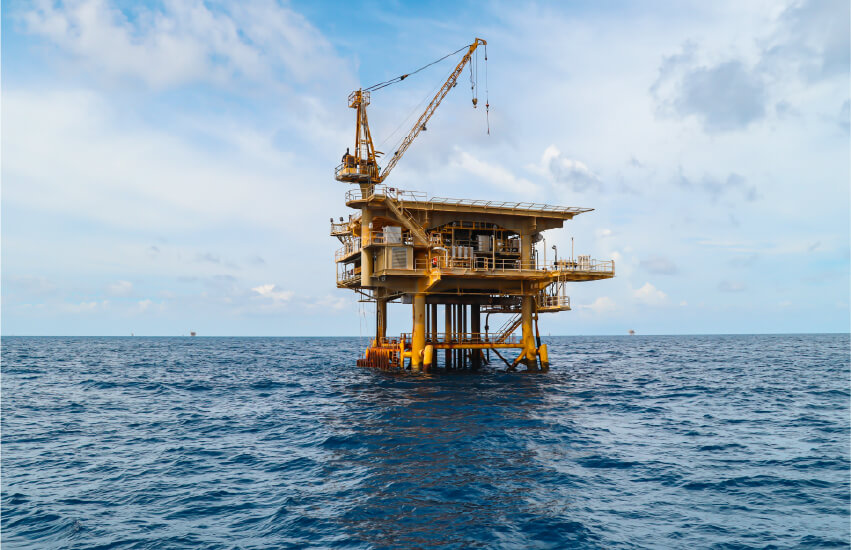
Onshore Base Stations
While technically LTE may reach 50 nautical miles (or 100 km) offshore, standard 4G/5G cell towers are designed for terrestrial coverage and typically reach up to 30–50 km, depending on power, tower height, and conditions. Beyond this, signals degrade rapidly, that’s why oil rigs and wind farms farther out often cannot rely solely on public mobile networks.
Offshore deployments that are closer to the shore may use direct onshore cellular connectivity. For example, ExxonMobil’s fleet of offshore drilling rigs in the Gulf of Mexico, located roughly 20 miles off the coasts of Texas and Alabama, connects to terrestrial cellular towers, albeit with cellular booster solutions to improve the reception on each platform. It allows workers to use cellular-enabled tablets to manage projects and perform maintenance, while also providing personal voice and data service in the living quarters.
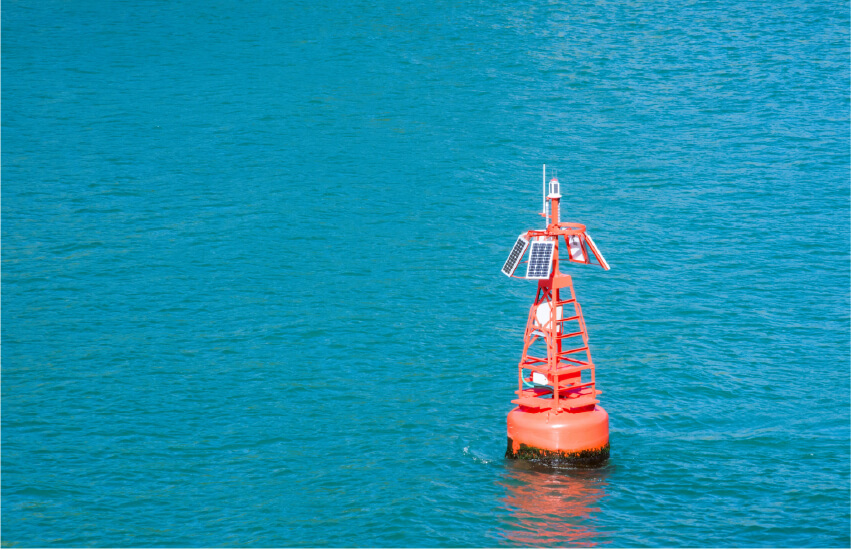
Offshore Base Stations
Along with using onshore cellular towers, there are offshore base stations built to ensure coverage in industrially dense areas, such as North Sea and the Gulf of Mexico. They are built on fixed offshore platforms and include subsea fiber and microwave links that connect them to onshore infrastructure. Such setups are created to provide low-latency and high-capacity network coverage to support industrial IoT, crew connectivity, automation, and remote operations. They may be deployed hundreds of kilometers from the coast and serve multiple offshore installations, including oil & gas platforms, exploration rigs, wind farms, FPSO (Floating Production Storage and Offloading units) and vessels.
It is important that while these networks are built by companies providing managed services designed specifically for offshore industries, they may have roaming agreements with public mobile network operators, and therefore allow standard devices to connect offshore using the same SIM that works onshore.
Cellular base stations can also be deployed on buoys. For example, JET Engineering deploys buoy-based floating 5G base stations off the coast of the UK, which deliver offshore 5G coverage by acting as a relay beyond the reach of traditional coastal networks. While not mainstream for everyday industrial IoT yet, such flexible buoy-based nodes are capable to extend connectivity without building permanent infrastructure, and have industrial and governmental applications, particularly in energy, shipping, and defense.
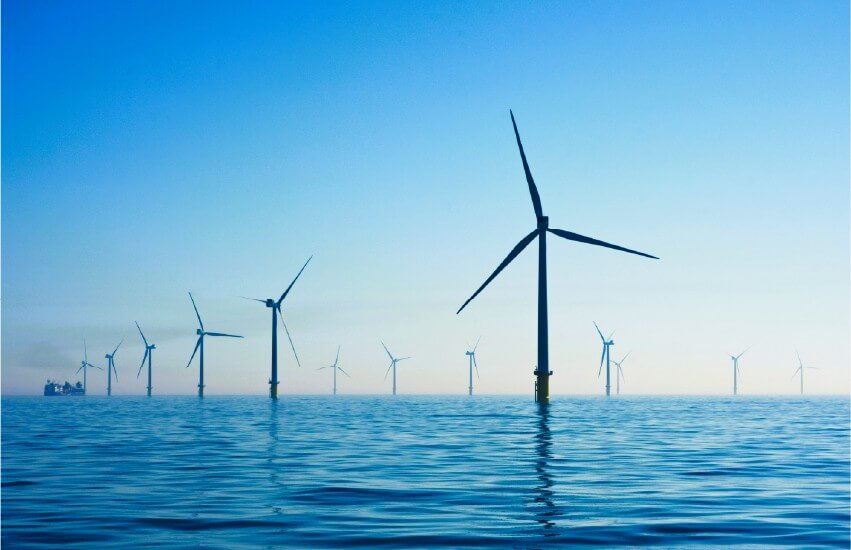
Private Networks
Private offshore networks typically involve dedicated base stations and subsea cables, but unlike shared offshore infrastructure mentioned above, they are owned and operated by the company behind a specific project – such as a wind farm or oil rig. Usually it is a site-specific private LTE/5G network around a single project, with coverage and performance designed for a specific use case.
A good example is Ørsted that deploys private networks on turbines when building wind farms all over the world, from a 4G LTE network for the Greater Changhua wind farms in Taiwan, located 35–60 km offshore, to a high-speed 5G network during the construction of the Hornsea 3 wind farm about 160 km off the UK coast.
Coverage
Coverage is critical offshore for safety systems and navigation. Gaps in coverage mean data can’t be transmitted in real time, creating risks for worker safety and operational control. Since offshore sites often imply that devices need to move between premises, coverage must be planned carefully to ensure there are no black holes where critical systems could fail.
Webbing guarantees coverage in over 190 countries and territories through partnerships with more than 600 mobile operators. Webbing’s solutions support connectivity across multiple networks in any location, minimizing the risk of downtime due to network outages or poor coverage.
Latency
Many operations offshore depend on real-time communication. Remote monitoring systems need instant updates to detect equipment faults, drones and robots require fast response for navigation, emergency alerts must be delivered immediately to protect workers, and even disruption of voice and video calls can make coordination between offshore sites and onshore control rooms harder. Cellular networks can deliver latency as low as 1ms, but it is important to remember that actual latency depends on the connectivity provider’s core network architecture, since the data needs to travel all the way to the provider’s data center before going to its destination.
Webbing is a full MVNO owning a fully redundant, distributed core network with data centers on every continent. It features local breakouts to support high-performance connectivity and ensures minimal latency in every usage scenario. Last year, Webbing further enhanced its global network by adding new data centers in Japan, Singapore, and Australia.
Resilience
Networks must keep working even when conditions are extreme, but what happens if they fail? Resilience means having failover mechanisms in place, such as switching from a private LTE/5G network to a backup public network when one connection fails. It also means using redundant infrastructure (multiple links, power backups, ruggedized equipment) so that a single failure doesn’t bring the whole system down. In offshore industries, downtime can cost millions and put lives at risk, so resilience is essential.
Webbing is a global connectivity provider with a distributed full core network with local breakouts, multiple network solution, and data server redundancy that provides connectivity stability and low latency. As such, Webbing’s network is well suited to support mission-critical, high-data consumption type of use cases. It also allows for compliance with all types of connectivity regulations and eliminates the problem of restrictions on permanent roaming.
Integration Between Public and Private Networks
Private LTE or 5G systems only cover fixed sites like oil rigs or wind farms, while connected devices often move beyond those boundaries. Without public network roaming, assets would lose connectivity once they leave private coverage, creating dangerous gaps. Public networks also provide redundancy, ensuring that if a private link fails due to weather or technical issues, operations can continue without disruption. Seamless integration between private and public networks guarantees continuous communication and mobility support, allowing vessels and drones to move between facilities, which are essential for reliable offshore operations.
Webbing’s eSIM solution ensures failover connectivity with the capability of using multiple mobile carrier profiles and an option to fall back from a failing profile to a different profile without any need to communicate with a remote server or deal with multiple SIM cards. It helps enterprises that need access to private and public networks to ensure continuous data connectivity for their IoT devices. Easily set business rules help determine automatic profile allocation based on location and enable fallback mechanisms in case of private network failure or coverage issues.
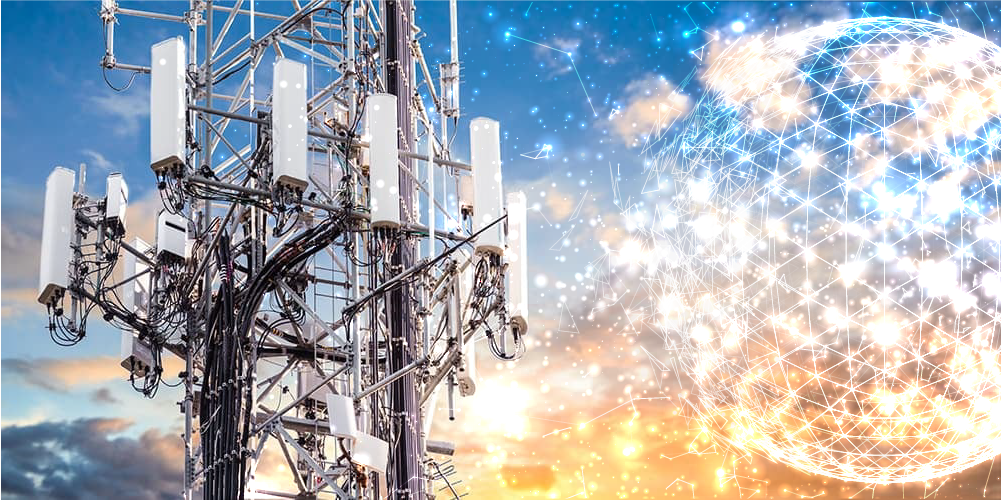
Webbing’s Connectivity Solution for Offshore IoT Deployments
Webbing offers a connectivity solution that ensures global access to reliable and high-quality internet, with low latency and the best of class coverage. It provides secure and continuous internet connection for devices deployed offshore, wherever they need it.
Webbing’s partner network of over 600 mobile operators worldwide guarantees global coverage. It allows to roam on several carriers’ network in every region, solving the problem of weak spots that any mobile network may have and ensuring full coverage and continuous connectivity even at offshore locations.
Our eSIM solution ensures failover connectivity with the capability of using multiple mobile carrier profiles, easily changing carriers at any time with zero integration, and an option to fall back from a failing profile to a different profile without any need to communicate with a remote server or deal with multiple SIM cards.
A flexible approach to data packages allows us to tailor our connectivity offering for every customer based on the type of connected devices and their data consumption needs as well as the locations where the devices are used, aiming at overall optimization of the total cost of operations for the client.
Our solutions can help global companies deploying IoT devices offshore overcome their connectivity challenges and optimize costs, providing the benefits of roaming with multiple carrier options in every country, and seamless transition between carriers, while maintaining low rates and low latency on a global scale with a single SIM.
Reach out today to learn more about Webbing’s connectivity solutions for offshore IoT deployments.

